Cultural Travel With The Urban Explorer
Duncan J.D. Smith on discovering unusual places, the particularity of single male traveling and Europe's top locus amoenus
Out there in the wilderness of traveling is a small clique of men who have specialized in bringing the unusual, the unheard-of, the undiscovered to a wider audience.
Many of them do it through TV shows. Others shoot documentaries. And some write books. What they all have in common is their hands-on approach to the topics they cover. Each in their individual way they go to the middle of the action, often spending weeks in research and preparation. Their quest: to bring you an authentic insight into something today’s media consumer is interested in, but most likely not familiar with-not the easisest task in market that today seems to be fully over-saturated.
Our pioneers approach their topics from a triple angle. For one, it is shock value that never fails to deliver. Even when they are presented documentary-style, the evergreens of pornography, crime and religious sects will always draw in an audience. And even more so when you seek them out across the globe as BBC reporter turned investigative journalist Louis Theroux does.
Travel And Shock Value: Meet Louis Theroux
Take the polite Englishman Louis Theroux, for instance. With his series Louis Theroux’s Weird Weekends Mr Theroux was able to gain access to communities and lifestyles that usually shield themselves from too much attention — or that are simply shunned by the public. Episodes on Porn, UFOs or Born Again Christians provide for an entertaining insight into a world that the least can be described as ‘unusual’.
Louis’ Weird Weekends
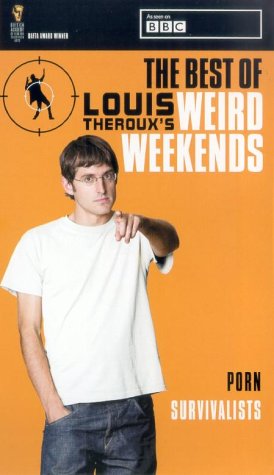
Photo: Louis Theroux / BBC
What Louis does in each of the episodes is to befriend one member of that particluar group. Said member then agrees to give him a guided glimpse into what the lifestyle presented in the episode is like. Through his insider friend Louis is then, more or less successfully, introduced to other members of the subculture.
In the majority of cases this leads to unique insights into communities that still manage to remain somewhat undiscovered by mainstream media. In a minority of cases, though, Louis’ attempts are met with conflict, mistrust and animosity towards the reserved Brit whose attempts of creating a bond with the subculture are seen as intrusive.
Still, both outcomes make for an interesting view, and seeing Louis advances getting rebuffed often is more telling to viewers than when he is openly let it in.
Theroux’s ‘Game’: Being The Silent Observer
Each episode of the Weird Weekends lives off Louis’ unique social skills. With his reserved British demeanour Theroux stays in the back and lets his subculture take the lead. Keeping a well-administered balance between empathy and exposure it is his commentary from the off that presents the stark contrast between the ‘unusual’ lifestyle and mainstream culture.
Even though Mr Theroux has provided for some memorable moments in recent TV history, among them a visit to a high-security prison where he is urged to come clean on whether or not he is ‘a real nigga‘, Louis Theroux is by far not the only man in the niche.
Travel and Cooking: Anthony Bourdain
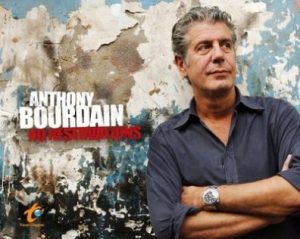
Photo: Anthonybourdain.net
With his TV series No Reservations and Anthony Bourdain: Parts Unknown the US-born chef, traveler and author Anthony Bourdain has made a name for himself by bringing all kinds of undiscovered specialties to the screen.
From drinking at a rooftop bar in Vietnam to having a fried pig’s head in Cuba you could hardly say Mr Bourdain gains a lesser points on the score cards of shock value than BBC’s Louis Theroux.
In fact, Anthony Bourdain’s writing was so successful it earned him a spot on the New York Times bestselling list. His book A Cook’s Tour remained there for weeks while one episode in his self-hosted TV series Parts Unknown earned him an Emmy nomination (a nomination, mind you, he did not win the award).
Why Weird Weekends Are So Succesful
What has allowed series on subcultures and local dishes to gain such tremendous success? If you cross out the option that both Theroux and Bourdain are charismatic overlords, then there is a clear answer to that question.
The reason why Theroux and Bourdain are flowing in awards is simply that they expand the portfolio. In both cases traveling is expanded by another feature that has a proven record of drawing in audiences. And more often that not, said feature come down to the short-lived sizzle of shock value. In that sense, Bourdain eating a fried pig head in Cuba and Theroux investigating a dating agency in Bangkok are the same thing.
A Third Way
As much as Theroux and Bourdain deserve their success all things come to an end. Let enough time pass by and even episodes on shock value classics like Porn, Rednecks and Gangsta Rap will become stale and predictable. The same goes for Mr Bourdain who won’t grow old of selling even the most mediocre favela stew as an undiscovered local specialty to viewers (“God, fucking delicious”).
The one downside to Theroux and Bourdain is that the two appeal to the somewhat less sophisticated instincts in man. Genuine as their concepts may be there is little left once the sizzle of Shock ‘n’ Thrill has evaporated.
But it doesn’t have to be like that. One man has found a way of discovering the undiscoverd that stays clear off shock value and cheap thrills.
History and Culture: Duncan J.D. Smith
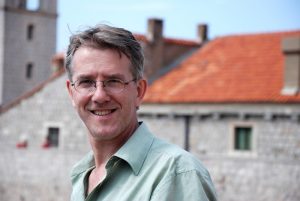
Duncan Smith in Dubrovnik, Croatia. Photo: D. Smith
Outside of any mainstream turbulence Duncan J.D. Smith, who goes by the name of The Urban Explorer, has established for himself a way of traveling that allows for a more sophisticated approach to ‘discovering the undiscovered’.
A historian by trade Duncan has published no less than 10 books in a series that he named the ‘Only In’ city guides. Featuring one major European city in every episode Duncan has, among others, released titles on cities like Munich, Prague or Budapest.
Getting Your Feet On The Ground: How Duncan Smith Dives Into a City
His guides take a unique stand among the abundance of travel guides in the market. What Duncan does is to get to the heart of a city. And he gets there through a unique double-sided approach where months of research meet a hands-on approach to writing and exploring.
The first thing Duncan does is to really establish himself in his newfound destination. While others write about destinations from a distance, Duncan makes them his place of residence. Arranging appointments to talk to an average of 90 locals from all walks of life, he also learns the local language to navigate more easily and only then compiles all of his insight into the final book.
His second unique feature is that Duncan, unlike Bourdain or Theroux, does not add anything new to the equation. That is because he doesn’t have to. He works with whatever a city throws at him, following trace after trace to carve out what a city really is about. The immense amount of research together with the hints he gets from local journalists and historians enable him to fully discover his cities and bring out their unseen sides.
With his unique style of exploring Smith reminds of the archeologist that reveals artefacts at an excavation site. A statement that Duncan Smith himself would subscribe to.
“It is basically like a peeling off the layers of an onion,” says Smith who speaks in that marvellous BBC-like British accent. “Whenever I am writing a new guide, my daily routine changes completely. I get up with dawn and literally spend the whole day walking around the city, no matter heat or rain. I go after every single scrap of information that I have collected for months prior to my ‘mission'”. The outcome of such a mission are his “Only In” guides that set themselves apart from the usual travel guides mostly written by teachers, expats or newspaper journalists.
What drives a man to come up with an entirely new concept to giving out travel advice? We spoke to Duncan Smith about the explorers that inspired him, his writing process as well as his favorite European locus amoenus.
Begin of Interview
» Duncan, publishing more than a dozen books still has to start somewhere. If you had to name one thing that got you into ‘discovering the undiscovered’ – what would it be?
That’s an easy one.
Back in 1970, when I was barely ten years old, I visited my grandfather in the east of England. A retired bank manager, he was now pursuing his real passion as a historian and amateur archaeologist. One afternoon he led me up the garden to a new rockery he had made. “Those stones come from a Roman soldier’s grave” he announced. I was fascinated by this and for the few years remaining until his death he taught me how to read the landscape for signs of the past. Fossilized seashells that I previously assumed were worthless pebbles, evidence for ancient farming in newly-tilled fields and deciphering gravestones in old cemeteries. I was hooked immediately.
» I can imagine your Only In guides require an abundance of research. Tell us all about your writing process!
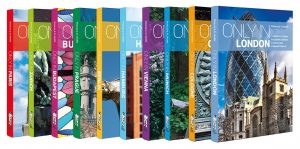
Duncan’s series of “Only In” guides. Current volumens include Prague, Budapest and many more. Photo: Duncan Smith
It’s a question I’m often asked. Certainly you have to have an eye for such things.
When I’m writing a new guidebook there’s a lot to be done before actually setting out. First off I buy a decent map of the city in question and scrutinize it for curious street-names, unusual places of worship, little-known museums. I also make sure I include off-the-beaten track suburbs.
Additionally, I trawl newspaper articles, history books and, of course, Google madly, all of which adds up to around a thousand hours of research. Only then do I set out for my destination and once there I walk for up to eight hours a day, for a total of 30 days.
Criss-crossing the city I scribble notes, talk with locals and take photos. Gradually, like an archaeologist, I’m able to peel back the layers of a place to reveal its innards. All in all I spend around 12 months to create a new book.
» The term Urban Exploring usually deals with abandoned buildings and urban bunkers. However, we probably won’t see you crawling into a tunnel any time soon. What is the main difference between you and the other ‘Urban Explorers’?
I consider myself an oldschool city explorer. Someone who explores cities for a job. I actually came up with the tag ‘The Urban Explorer’ before being aware of the craze for infiltrating tunnels, bunkers and other off-limits and abandoned structures. Unlike those Urban Explorers, the locations I reveal are all not only visible but visitable – legally.
I favour less well-known locations accessible to all and use them to tell the story of a city. With the locations I introduce readers will rarely encounter tourist-inspired downsides like crowds, turnstiles and gift shops and entry is often free. The history is tangible and the memory more indelible.
That’s not say these locations are any less exciting. One of my favourites is the sewer system in the German city of Cologne, which still boasts a chandelier installed in readiness for a visit by the Kaiser – untouched and undiscovered even a century later.
» You are writing and traveling by yourself. Do you think you could have written your books when traveling with company, say, with a girlfriend or with ‘the lads’?
What advantages do you see in single male traveling?
Yes, I’m sure I could travel with company and still publish my books, but then the research would inevitably take much longer. I’m very strict with myself when visiting a place because time is money. And I don’t have too many friends willing to make the daily forced marches I impose on myself. These days I’m not only a self-employed travel writer but also my own publisher, so I’m all too aware that time equals money.
That said my partner, Roswitha, always spends a few days with me on research trips. It’s great to share newfound hidden places with her. But generally speaking company does tend to rob a trip of insightful meetings with locals, time-wise I mean. In the end, travelling alone always makes the return home that much sweeter.
» One thing that sticks out with your writing that you hardly cover anglophone countries-quite unusual for an Englishman, if I may say so. Are you a full-blooded European then?
Well, my latest book is”Only in London” and I’ve just commenced work on the 11th volume in my ‘Only In’ series: Edinburgh. But, yes, the other titles are all set squarely in Old Europe. That was dictated by my original publisher in Vienna, hence volumes on Budapest and Prague and a healthy coverage of Germany, too. I wrote “Only in Paris” in 2014.
I’m based currently in Vienna, where the cosmopolitan way of life has inevitably made me a fan of a unified ‘Europe’. I hear so many different languages here and the city’s various international institutions bring in people from all over the world. In our house alone we have people from Russia, China, Mali and Singapore. Despite its slightly stuffy reputation I find Vienna an invigorating place to live.
» Your website has an interesting section on ‘forgotten travellers’. Can you introduce us to one traveller who is forgotten by now, but who deserves to be remembered nonetheless?
I’ve long been interested in Britain’s forgotten travellers, those daring men and women who pushed the boundaries when Britain had an empire and there were still plenty of remote places worth exploring.
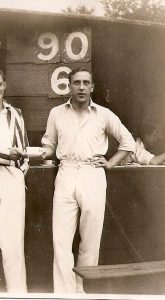
Kenneth Cecil Gandar-Dower (1908-1944)
One worth remembering is the marvellously-named Kenneth Cecil Gandar Dower. Known simply as Gandar to his friends he was born into a well-to-do family in 1908.
Early on he confessed to be being “one of those unfortunates who is driven by devils” to put his day-dreams of adventure into practice. After narrowly missing a First in History at Cambridge he represented his country in both tennis and squash. He then purchased a decrepit monoplane and for the fun of it flew 7,000 miles from London to Madras. Aged 26 he visited Kenya in search of a mythical spotted lion. He didn’t find it but returned with several cheetahs, which he raced on the country’s dog tracks.
Later he documented the Allied assault on Vichy-held Madagascar, leaping into the surf with a typewriter and umbrella. He died in 1944 aged just 36 when his Ceylon-bound ship was torpedoed in shark-infested waters.
» Let us wrap up with something quiet and pleasant. All articles in our “Things To Do“-series feature an urban locus amoenus, a tree-, water-, grass-inspired refuge from the haste of city life.
Since you have probably seen them in abundance, what would be your favourite locus amoenus in Europe and why?
Again this is an easy one for me. My favourite city refuge is undoubtedly the leafy courtyard called the Fähnrichshof in downtown Vienna. Despite being close to the city’s tourist-thronged cathedral, this place always feels calm.
It hasn’t always been that way, though. Back in the 13th century it was home to the Order of Teutonic Knights, whose job it was to protect pilgrims on their way to the Holy Land. When the knights grew too wealthy they were suppressed in an orgy of violence, which explains why the street outside is called Blutgasse (Blood Alley).
Within living memory children living here spoke of a knight’s sword embedded deep inside a mighty plane tree that fills the courtyard. In reality they were inspired by fragments of an iron fence that once girdled the tree, which itself is not nearly old enough. But it’s a marvellous example of how the best urban myths often have a kernel of truth about them.

End of Interview
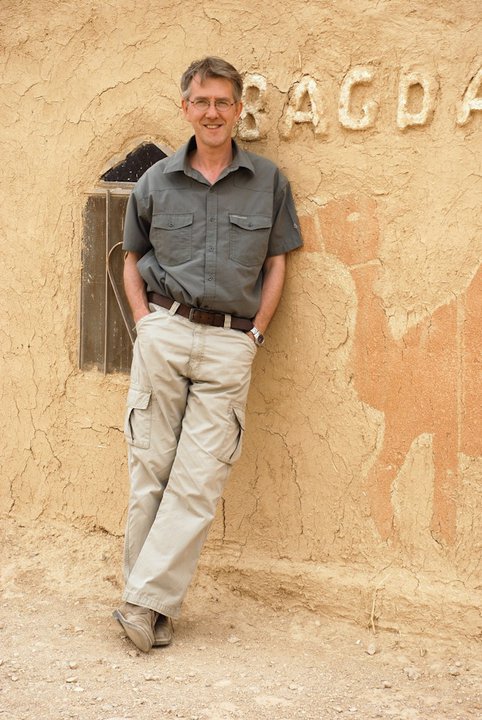
Duncan J.D. Smith
Born in 1960 Duncan initially studied history before persueing a career in publishing. Since 2003 he has worked fulltime as a world-traveler and consequent writer, creating a unique series of travel guides he named the “Only In” city guides.
An investigative journalist in travel writing, all of Duncan’s writing focuses on discovering the undiscovered parts of acity. Those parts that never make it into regular travel guides, because they lie below the surface of city trips and package tourism.
A Fellow of the Royal Geographical Society Duncan was elected a member of the British Guild of Travel Writers in 2011.


![The Urban Explorer: Introducing Duncan J.D. Smith [Interview]](https://euromentravel.com/wp-content/uploads/2016/09/Duncan-J.-D.-Smith-exploring-Montenegro-800x480.jpg)


